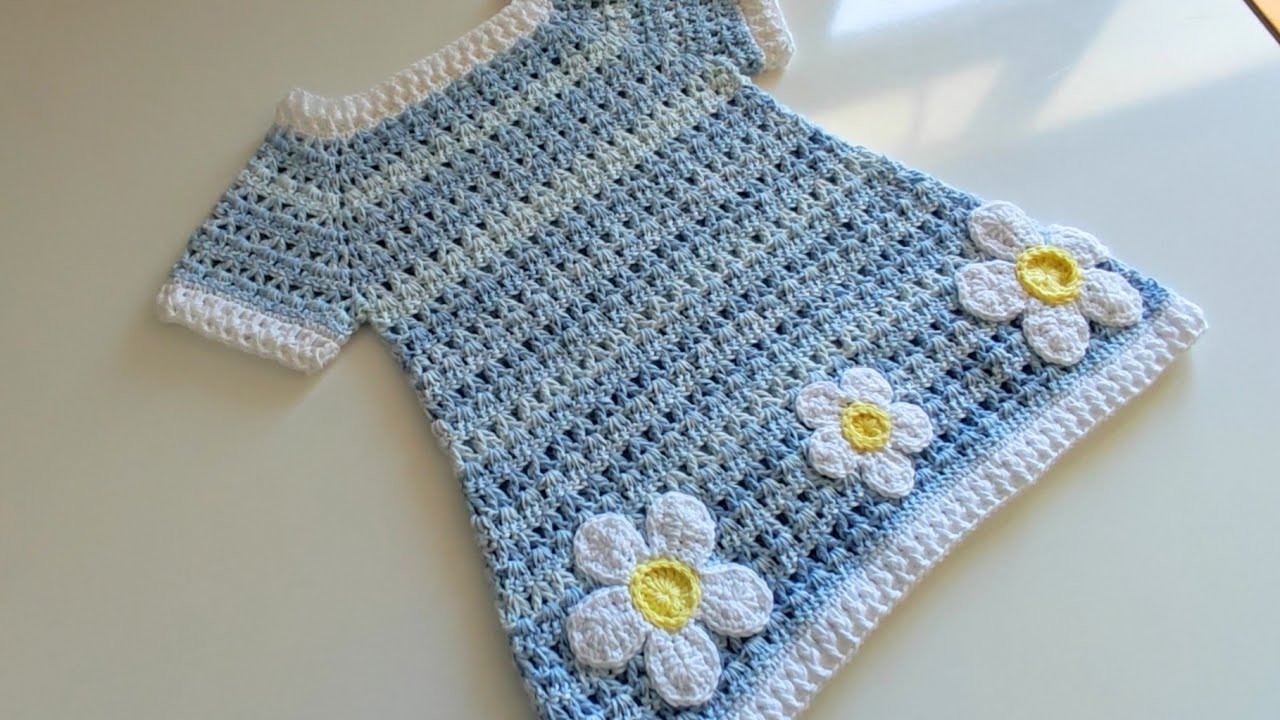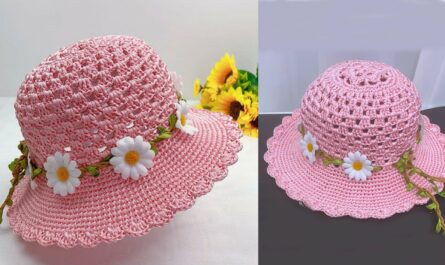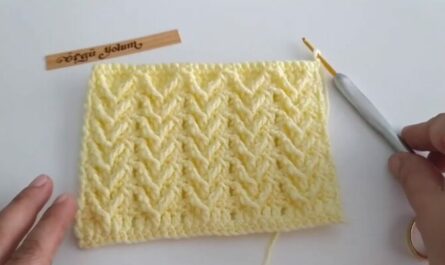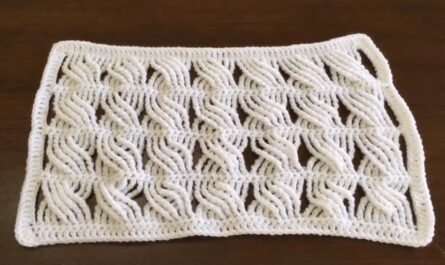When the days stretch long and golden, and the air hums with warmth, there’s nothing quite like a light, airy summer dress for a girl. And for ultimate comfort and play-friendly design, a crochet pullover dress is a pure delight. Free from the fuss of buttons, zippers, or ties, it’s a simple, charming garment that captures the essence of summer fun in every stitch.
This detailed guide will help you craft a beautiful, breathable, and utterly adorable “pullover” summer dress, perfect for sun-drenched adventures.
Embracing the “Summer Dress” Aesthetic
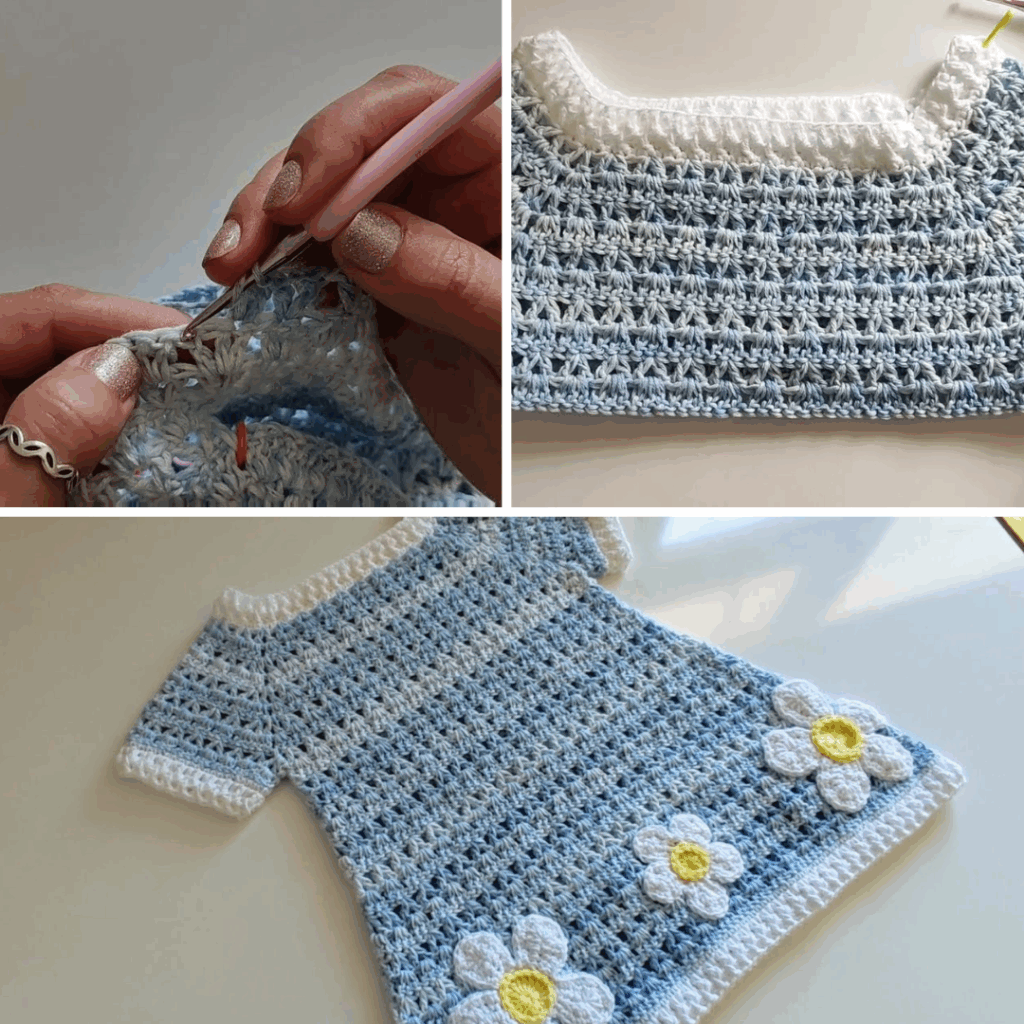
The magic of this project lies in infusing it with the bright, carefree spirit of summer:
- The Color Palette: Bright, Breezy & Playful:
- Vibrant Hues: Think sunny yellow, cheerful coral, electric fuchsia, refreshing turquoise, zesty lime green, or bright lavender.
- Soft Pastels: Delicate sky blue, gentle mint, soft peach, or pale pink for a sweeter look.
- Crisp Neutrals: Classic white or creamy ivory as a base or accent, offering a fresh, clean feel.
- Playful Combinations: Consider simple stripes, subtle color blocks, an ombre effect, or use a self-striping/variegated yarn for effortless color transitions and added visual interest.
- Yarn Texture & Weight: Light & Breathable:
- Weight: For true summer comfort, opt for lighter yarn weights. Fingering (Category 1), Sport (Category 2), or light DK (Category 3) are ideal. These create a fabric that drapes beautifully and won’t feel heavy in the heat. Avoid heavier weights like worsted unless you specifically desire a more structured or denser dress.
- Fiber: The fiber content is paramount for breathability and comfort in warm weather:
- Cotton: The undisputed champion for summer. It’s breathable, absorbent, has excellent stitch definition, and washes beautifully. Mercerized cotton offers a lovely sheen, while organic cotton provides extra softness.
- Bamboo: Known for its luxurious drape, silky feel, and excellent breathability. It also has good wicking properties, keeping little ones cool.
- Linen Blends (e.g., Linen/Cotton): Offer fantastic drape and breathability, and become incredibly soft with washing, developing a charming, rustic texture.
- Lightweight Acrylics: Many modern acrylics are designed to be soft, lightweight, and drape well, making them a durable and affordable alternative.
- Avoid: Wool (too warm), heavy synthetic blends, or overly fuzzy yarns that can trap heat or feel itchy.
- Stitch Patterns: Airy & Delightful:
- Focus on openwork, lace, or stitches that create a light, flowy fabric with good ventilation.
- Suggestions:
- Shell Stitch: Creates beautiful, airy texture with a scalloped edge, often resembling delicate waves.
- V-stitch: Simple, open, and works up quickly, creating a lacy effect.
- Granny Stitch (modern variations): Classic and open, ideal for a relaxed, lacy look.
- Filet Crochet: Using combinations of chains and double crochets to create open squares or even intricate pictorial motifs.
- Various Lace Patterns: Explore patterns that incorporate strategic chain spaces and skipped stitches to maximize airflow.
- Basic Stitches with Openwork: Even simple SC, HDC, or DC rows can be interspersed with rows of chain spaces to create subtle openwork.
- Design Details: Charming & Practical:
- Silhouette:
- A-line: Gently flares from the chest or natural waist, offering comfort and ease of movement.
- Empire Waist: A fitted bodice with a gathered or flared skirt beginning just below the bust.
- Simple Straight: A straightforward, comfortable tube-like design, often cinched with a belt.
- Neckline: Since it’s a pullover, the neckline must be wide enough to comfortably slip over the head without stretching excessively or gaping once on. A simple round neck, a gentle boat neck, or a slight scoop neck are common. It can be finished with a neat, simple edging or a small, delicate picot border.
- Sleeves: Most summer dresses are sleeveless. Simple finished armholes are perfect. Cap sleeves or very short flutter sleeves (often made with shell stitches) can add a sweet touch.
- Hem: A simple straight hem, a delicate picot edging, or a more elaborate shell border can finish the bottom of the dress beautifully.
- Embellishments (Optional): Small crocheted flowers, butterflies, ladybugs, or simple appliques can be sewn on for extra charm. A contrast color trim on edges adds a pop.
- Silhouette:
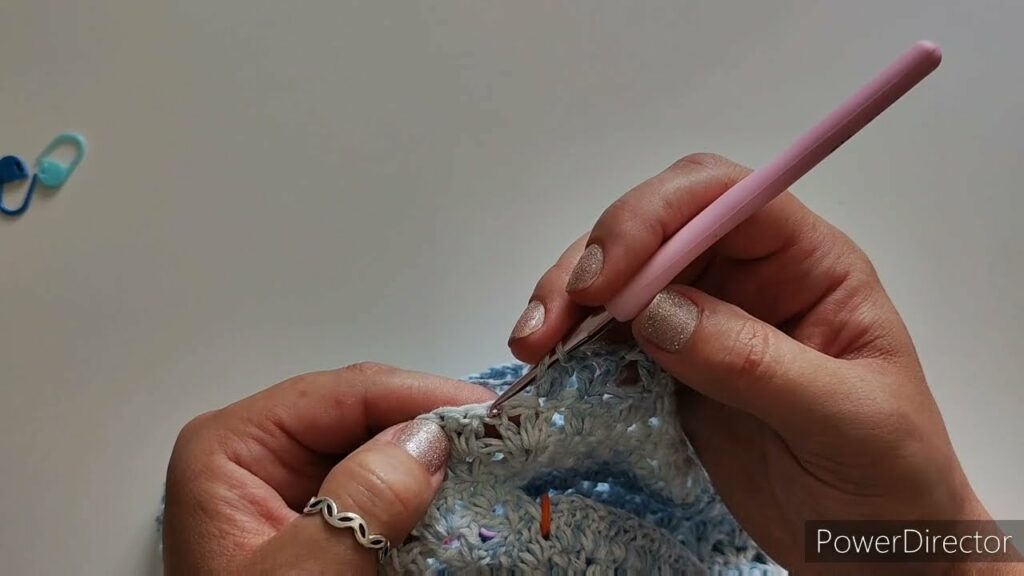
Why a Pullover Summer Dress for a Girl?
This garment is a staple for warmer weather for several reasons:
- Ultimate Comfort: The lightweight, breathable fabric is perfect for keeping cool and comfortable on hot days.
- Effortless to Wear: The pullover design means no fiddling with buttons or zippers, making dressing quick and easy for both parents and children.
- Play-Friendly: The relaxed fit and flexible crochet fabric allow for a full range of movement, ideal for active girls running, jumping, and playing.
- Versatile Style: Easily dressed up with sandals and a cute hair accessory for summer outings, or kept casual for beach days, park visits, or backyard play.
- Unique & Handmade: A special garment that stands out from mass-produced clothing, carrying the warmth and love of its creator.
Planning Your Summer Dress Project
A well-planned project is a joy to create:
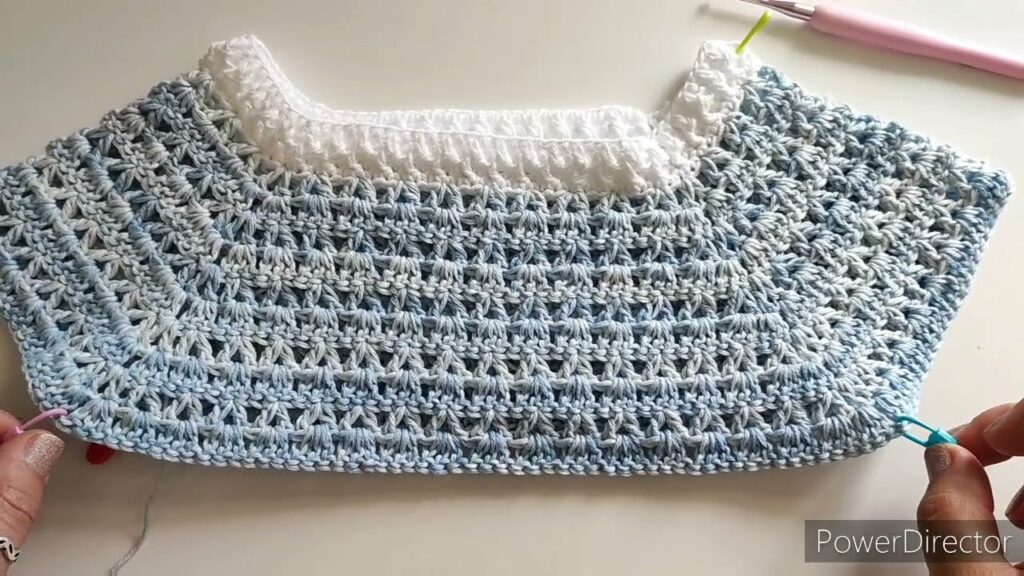
- Size Selection: Refer to standard children’s dress sizes (e.g., 2T, 4T, 6, 8, etc.). Crucially, measure the child’s actual chest circumference (for the bodice fit) and the desired length from shoulder to hem to ensure a perfect fit.
- Choose a Pattern (Highly Recommended!): While this guide provides general principles, a well-written crochet pattern is invaluable. Look for patterns specifically designed for pullover summer dresses for children. Patterns will provide:
- Detailed stitch counts and specific instructions for various sizes.
- Clear instructions for shaping (bodice, waist, skirt flare, neckline, armholes).
- Crucially, precise gauge information for the specific stitch patterns used.
- Clear photos of the finished dress to guide your vision.
- Construction Method:
- Top-Down (Common for Dresses): This method is very popular. You start crocheting at the neckline or upper yoke and work downwards, often in the round, gradually increasing stitches to form the bodice and then the skirt. This allows for easy length adjustments and even trying on as you go.
- Bodice-First, then Skirt: You crochet the bodice portion separately (either in the round or as panels and seam them). Then, you join your yarn to the bottom edge of the bodice and work the skirt downwards, typically in the round, increasing for flare.
- Gauge Swatch (Essential!): This step cannot be skipped for wearable items. Crochet a swatch (at least 4×4 inches / 10×10 cm) using your chosen yarn and hook, working in the main stitch pattern of the dress. Wash and block the swatch exactly as you would the finished dress. Then, measure your stitches and rows carefully. If your gauge doesn’t match the pattern’s, adjust your hook size (go up for fewer stitches per inch, down for more) until it does. An incorrect gauge will result in a dress that’s too big, too small, or has the wrong drape.
VIDEO TUTORIAL PART 1 ;
Materials You’ll Need
- Yarn: (As detailed in the “Summer Dress Aesthetic” section) The quantity will vary by size and yarn weight, but typically 2-6 skeins for a dress.
- Crochet Hook: The size recommended by your pattern, adjusted based on your gauge swatch.
- Notions:
- Stitch Markers: Invaluable for marking the beginning of rounds, increase points, and dividing sections (e.g., for armholes).
- Tapestry Needle: For neatly weaving in yarn ends.
- Scissors: Sharp and dedicated for yarn.
- Measuring Tape: For checking gauge and garment dimensions as you progress.
- Elastic Thread (Optional): If your pattern calls for a gathered neckline or waist, crocheting over elastic thread can provide a snug yet stretchy fit.
- Blocking Mats and T-pins (Recommended): Especially for lace patterns and cotton/bamboo yarns, blocking helps open up stitches, even out the fabric, and achieve a beautiful drape.
Key Crochet Techniques for a Summer Dress
You’ll utilize a combination of fundamental and garment-specific techniques:
- Basic Stitches: Chain (ch), Slip Stitch (sl st), Single Crochet (sc), Half Double Crochet (hdc), Double Crochet (dc). These are the building blocks of your fabric.
- Increasing & Decreasing: Essential for shaping the bodice, creating waist definition (if desired), and flaring the skirt.
- Working in Rounds: Very common for seamless dresses, where you join each round.
- Working in Rows: If your pattern involves creating flat panels for the bodice or skirt before seaming.
- Joining: Learn how to create seamless joins for working in the round. If using panels, the Mattress Stitch creates an almost invisible and very strong seam.
- Lace/Openwork Stitches: Practice executing your chosen airy stitch pattern accurately to maintain consistency and a beautiful open look.
- Edging: A simple row of single crochet, a delicate picot edge, or a small shell border can provide a neat and polished finish around the neckline, armholes, and bottom hem.
Step-by-Step Flow (Conceptual Guide – Assuming Top-Down Yoke then Skirt)

- Preparation: Choose your pattern, make that gauge swatch, and gather all your materials.
- Crochet the Yoke/Bodice: Start at the neckline. Follow your pattern’s instructions to crochet the yoke (the upper part of the dress that covers the chest and shoulders). This is often worked in the round, incorporating increases to shape the shoulders and chest.
- Divide for Body & Armholes: Once the yoke reaches the correct size, you’ll typically skip a section of stitches for the armholes (or work minimal cap/flutter sleeves), and then join the remaining sections to continue working the main body of the dress.
- Crochet the Skirt: Continue working in the round from the waist/bodice down. Your pattern will specify how often to increase stitches to create the desired flare (A-line, fuller skirt, etc.). Work until the dress reaches the desired length.
- Finish Neckline: Add a clean, flexible border around the neckline. This could be a few rounds of single crochet, or a simple picot edging. If using elastic thread, incorporate it here.
- Finish Armholes (and Sleeves if applicable): Add a neat border around the armhole openings (and finish any cap/flutter sleeves if your design includes them).
- Finish Hem: Add a decorative or simple border to the bottom hem of the dress.
- Finishing Touches: Weave in all remaining yarn ends meticulously using a tapestry needle.
- Blocking (Recommended): Gently wet or steam the finished dress. Carefully shape it to the desired dimensions, opening up any lace stitches and evening out the fabric. Pin it flat on blocking mats and allow it to dry completely. Blocking enhances drape and gives your dress a beautiful, professional finish.
Tips for Success
- Read the Pattern Thoroughly: Understand the entire construction process, including all shaping details and stitch instructions, before you begin.
- Don’t Skip the Gauge Swatch! (This is absolutely critical for garments to ensure the correct size and drape).
- Use Stitch Markers: They are indispensable for marking the beginning of rounds, increase/decrease points, and raglan lines (if applicable).
- Count Your Stitches Regularly: This simple habit helps catch any errors early, saving you frustration later.
- Choose Your Yarn Carefully: The fiber content and weight are the most crucial factors for a comfortable and beautiful summer dress.
- Be Patient: Crocheting a garment takes time. Enjoy the process and the satisfaction of seeing it come to life.
- Blocking is Key for Drape: Especially with cotton, bamboo, and lace stitch patterns, blocking truly transforms the garment.
VIDEO TUTORIAL PART 2 ;
Caring for Your Crocheted Summer Dress
To keep your handmade summer dress looking fresh and beautiful:
- Follow Yarn Label Instructions: Always defer to the specific care instructions on your chosen yarn skein.
- Gentle Washing: Hand wash in cool water with a mild detergent, or use your machine’s delicate/gentle cycle (if the yarn is specifically labeled as machine washable).
- Reshape and Dry Flat: Gently squeeze out excess water (never wring or twist!). Reshape the dress to its original dimensions and lay it flat on a clean towel or a mesh drying rack to air dry completely.
- Avoid Hanging: Never hang a wet crocheted garment, as its weight can cause it to stretch and distort out of shape.
Crocheting a pullover summer dress for a girl is a delightful project that combines practicality with handmade charm. It’s a garment that will bring sunshine to her wardrobe, perfect for endless summer play and special memories. Enjoy the process of creating this light, breezy masterpiece!
